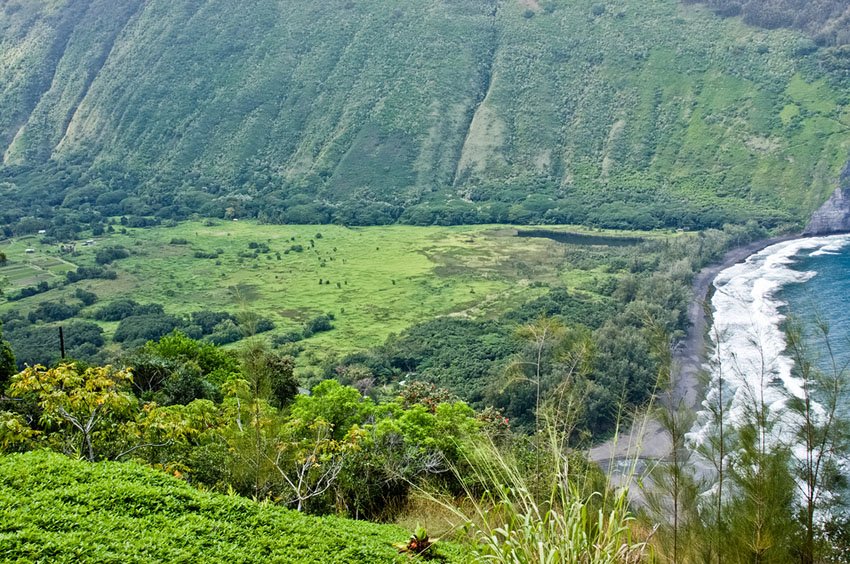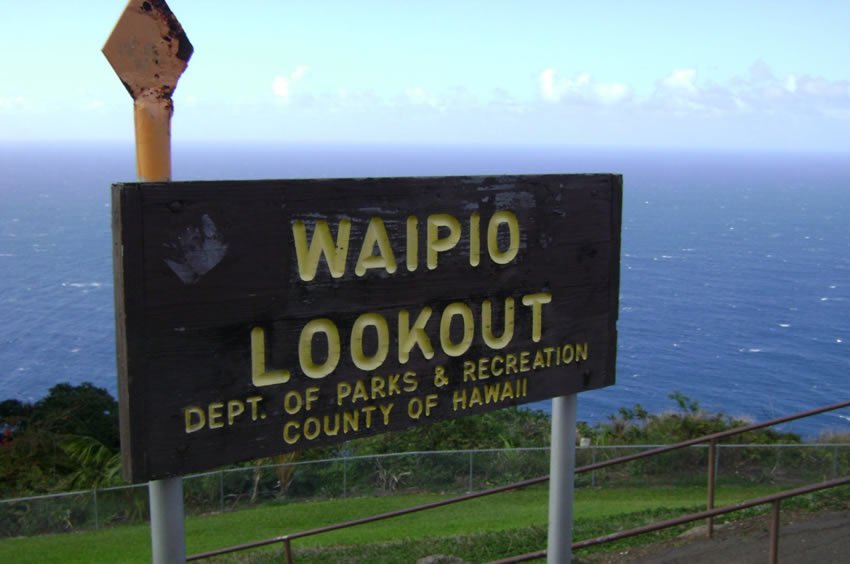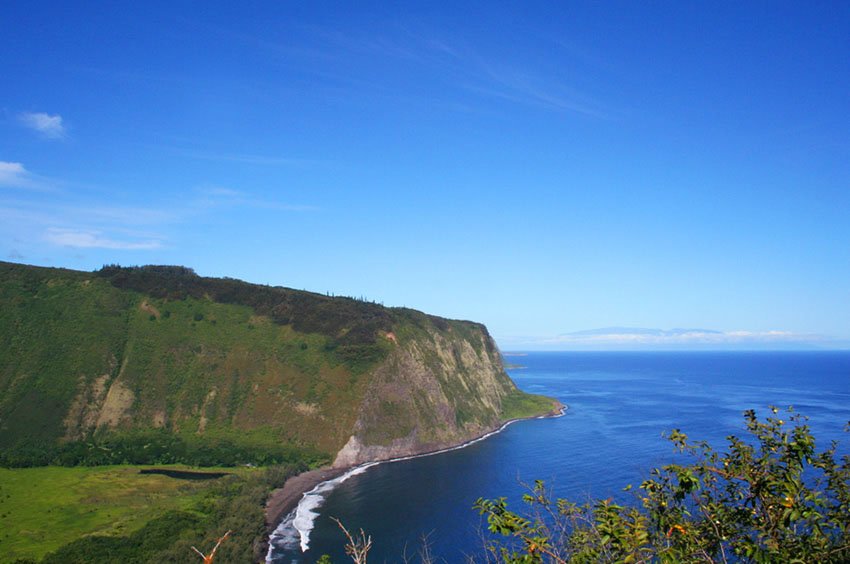Waipio Valley

Waipio Valley is one of the most breathtaking and sacred places on the Big Island's Hamakua Coast. Towering sea cliffs, lush vegetation, cascading waterfalls, and a dramatic black-sand beach create a landscape of serene beauty and spiritual depth. Though access is challenging, visitors can enjoy panoramic views from the lookout or hike down the steep trail to explore the valley floor. Waipio is a place of legends, ancient taro farms, wild horses, and Hawaiian history that continues to captivate all who visit.
Waipio Valley, Big Island
Waipio Valley on the Big Island's Hamakua Coast is the last and largest of the seven valleys east of the Kohala Mountains. Giant cliffs rising over 2,000 feet (610 m) surround the lush valley and give it an air of serenity, seclusion and mystery.
Like many places on the Big Island, getting to the valley is somewhat difficult. If you plan to drive yourself, a 4-wheel drive vehicle is strongly recommended. The one-mile long road is paved, but steep and narrow. Alternatively, you can park at the Waipio Valley Lookout and from there hike down into the valley.
Once you reach the valley, there is a black-sand beach towards the right (after a 10-minute walk), which lines almost the entire shoreline of the valley. Even though the beach looks beautiful, swimming can be dangerous here due to rip currents and high surf, especially during the winter months.
After a 5-minute hike into the valley, you can see Hi'ilawe Falls in the distance, which is one of the tallest waterfalls in Hawaii, dropping 1,450 feet (442 m) with over 1,000 feet (305 m) of free-fall. Hiking here is possible, but difficult as there is no trail (it's a 2-mile, 4-hour roundtrip hike). Also, you'll have to walk through streams, bushwhack and ask residents for permission to cross their property. Sometimes the falls dries up completely, so trying to go there may not be worth the effort.
There are a few accessible waterfalls to the south, such as Kaluahine Falls and Waiulili Falls. Legend has it that nightmarchers sometimes descend from the upper valley to the beach. They march to Lua o Milu, a secret entrance to the netherworld.
The valley itself is hardly populated, but signposts have been put up to mark the sacred and private areas. You may also come across some wild horses who live here. The trail to the beach is public, but much of the valley is private property. If you plan to explore the valley, keep this in mind and ask for permission. For this reason it is best to explore the valley with a guided tour.
Key Features of Waipio Valley
- Scenic lookout: Offers panoramic views of the lush valley, sea cliffs, and coastline
- Black sand beach: Rugged and secluded shoreline accessible by foot or 4WD vehicle
- Hi'ilawe Falls: One of Hawaii's tallest waterfalls with over 1,400 feet of total drop
- Steep access road: A one-mile, 25% grade road requiring 4WD or a strenuous hike
- Historical taro fields: Once a thriving agricultural area, Waipio was historically significant for wetland taro cultivation
- Hiking and guided tours: Trails and horseback rides lead through private and sacred lands (permission required in many areas)
- Wild horses and legends: Known for roaming horses and Hawaiian myths such as the nightmarchers
Frequently Asked Questions
Can I drive into Waipio Valley?
Only 4WD vehicles are allowed due to the extremely steep and narrow descent. If you're unsure, it's safer to hike or take a guided tour.
How long does it take to hike into the valley?
The hike is roughly 1 mile one-way and takes 30–45 minutes going down, longer coming back up due to the incline. Bring water and wear good footwear.
Is it safe to swim at Waipio Beach?
Swimming is not recommended due to strong rip currents and rough surf, especially in winter months.
Is it okay to explore the valley freely?
Much of Waipio Valley is privately owned or sacred. Visitors should respect posted signs and avoid trespassing unless part of a guided tour.
Are tours available?
Yes, horseback riding, wagon tours, and hiking excursions are offered by local guides who have permission to access deeper parts of the valley.




















